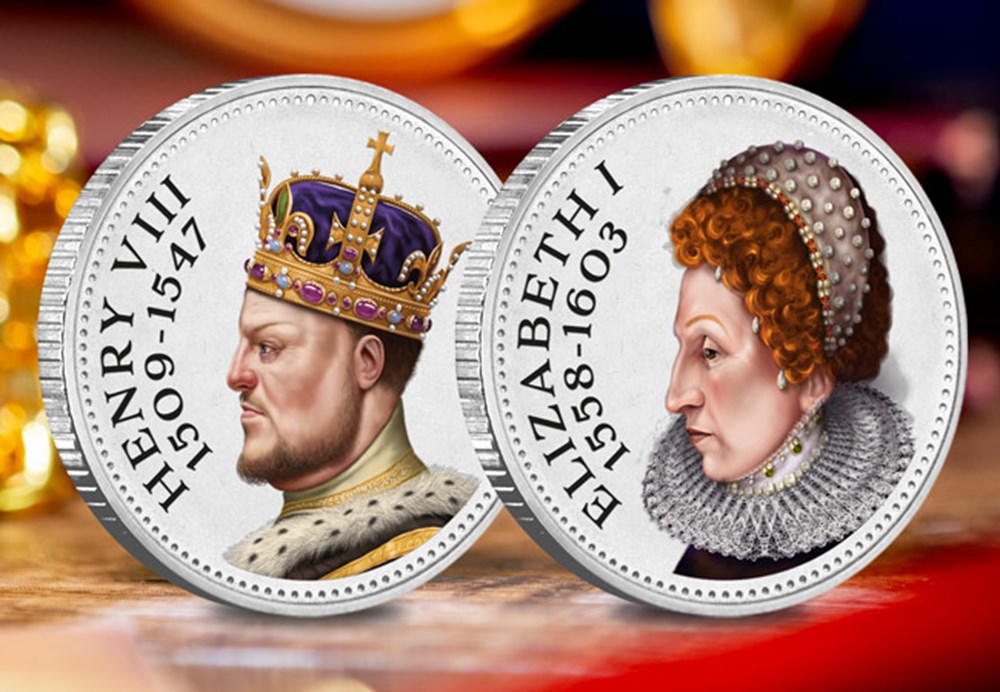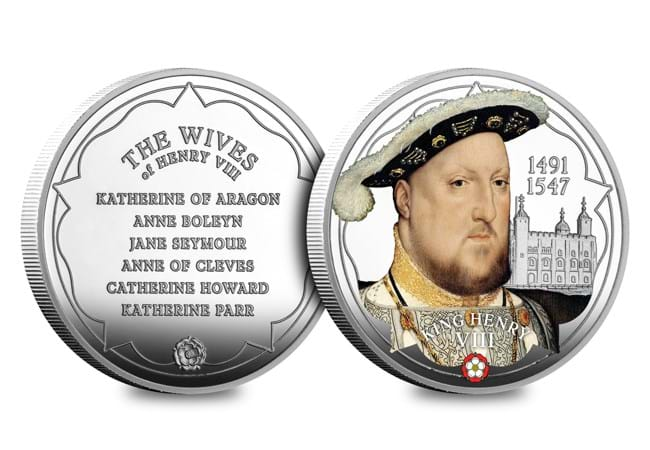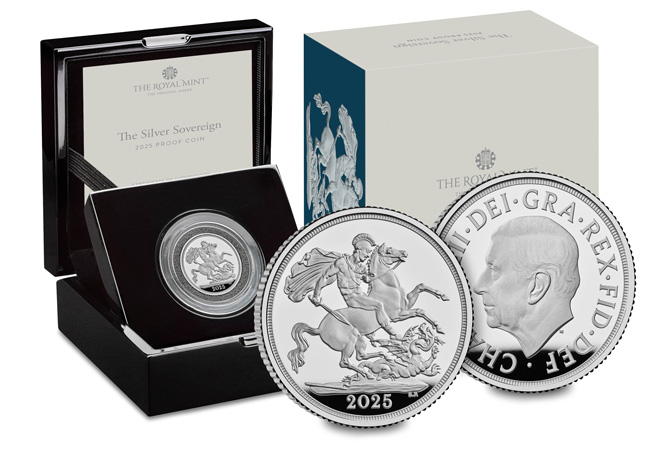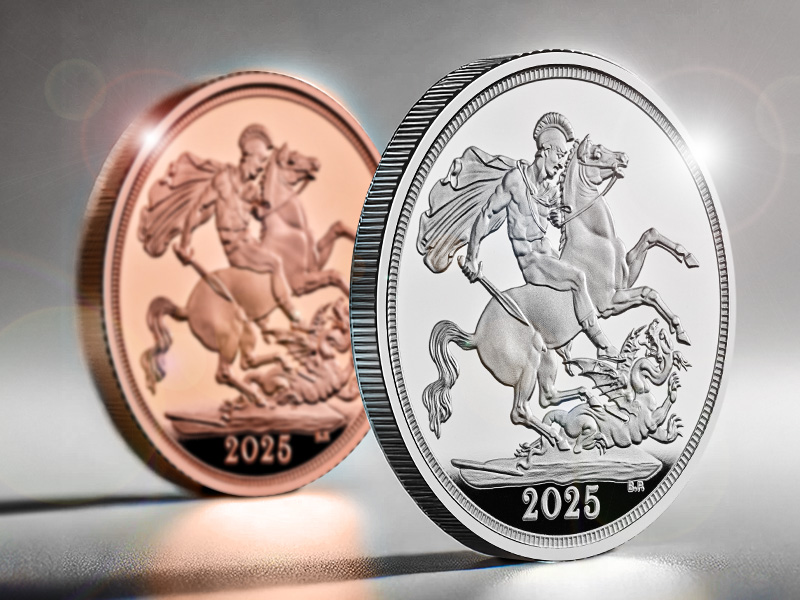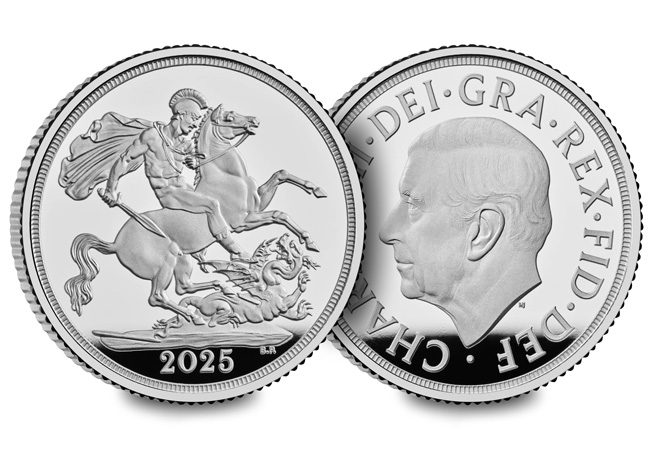Tudor England: A Pop Culture Phenomenon That Never Fades
Over 500 years have passed since Henry VIII ruled England, but the Tudor dynasty continues to captivate hearts and minds across the globe. From the West End to prime-time TV, the Tudors remain an enduring source of fascination, blending drama, romance, intrigue, and sheer opulence. Let’s explore why this fascinating chapter of history remains such a vibrant part of today’s pop culture.
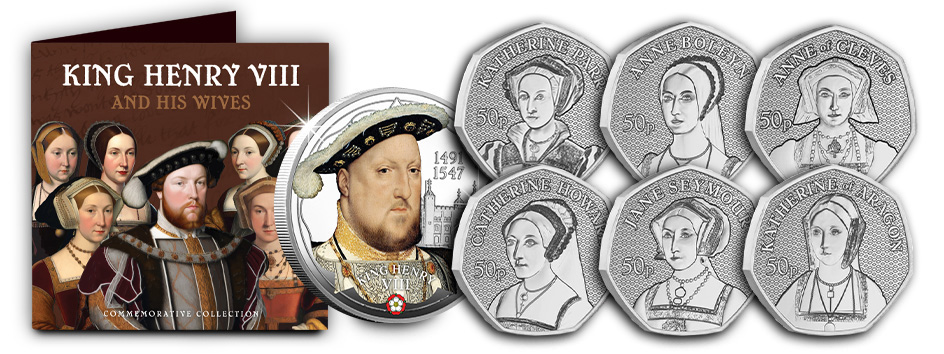
On Stage and Screen
One of the most dazzling examples of Tudor history thriving in modern entertainment is SIX: The Musical. This sensational stage production reimagines the lives of Henry VIII’s six wives as a pop concert, blending history with empowering anthems. Each queen tells her side of the story in a high-energy, feminist reworking of their tales, turning tragic endings into bold declarations of independence. The show’s global success proves that even centuries-old stories can have a modern voice.
Credit – https://sixonbroadway.com/ Youtube Channel – https://www.youtube.com/@sixglobal
Meanwhile, dramas like the BBC’s Wolf Hall and The Tudors bring Tudor England to life on screen with breathtaking visuals and riveting storytelling. These series capture the drama of court life, from Anne Boleyn’s rise and fall to Thomas Cromwell’s machinations behind the throne. Their cinematic portrayal keeps audiences hooked, proving that historical figures like Henry VIII are as compelling as any fictional character.
Watch the BBC first on iPlayer 👉 https://bbc.in/iPlayer-Home
Fashioning the Past: Tudor Style in Modern Media
Tudor fashion and iconography are unmistakable. Who can forget the opulent gowns, towering headdresses, or Henry VIII’s iconic fur-trimmed robes? These elements regularly influence everything from runway shows to film costuming, where echoes of Tudor grandeur and style are reinterpreted in new and creative ways. Even in modern art and advertising, the distinctive visual style of the Tudors continues to inspire.
Endless Drama: Why We Love the Tudors
The Tudors’ stories read like a script for the ultimate soap opera. Love, betrayal, power struggles, and executions—these timeless themes resonate across generations. The larger-than-life personas of Henry VIII and his wives bring unparalleled drama, making them a source of inspiration for writers, directors, and artists.
Celebrating Tudor England Through Collectibles
For history enthusiasts and collectors, tangible connections to this era, like collectible coins or commemoratives, offer a a unique way to immortalise Tudor history. Our exclusive range of products featuring Henry VIII and his wives captures the essence of this fascinating period. Each item is a tribute to the characters and stories that continue to inspire books, plays, and films.
From stage musicals to prestige dramas, the Tudors have a unique ability to bridge the gap between history and pop culture. Their enduring appeal lies in the rich tapestry of their lives, full of triumphs and tragedies that continue to resonate. Whether you’re a fan of SIX, Wolf Hall, or simply fascinated by the legacy of this iconic dynasty, the Tudors prove that history is never truly in the past—it’s alive, dynamic, and endlessly inspiring.
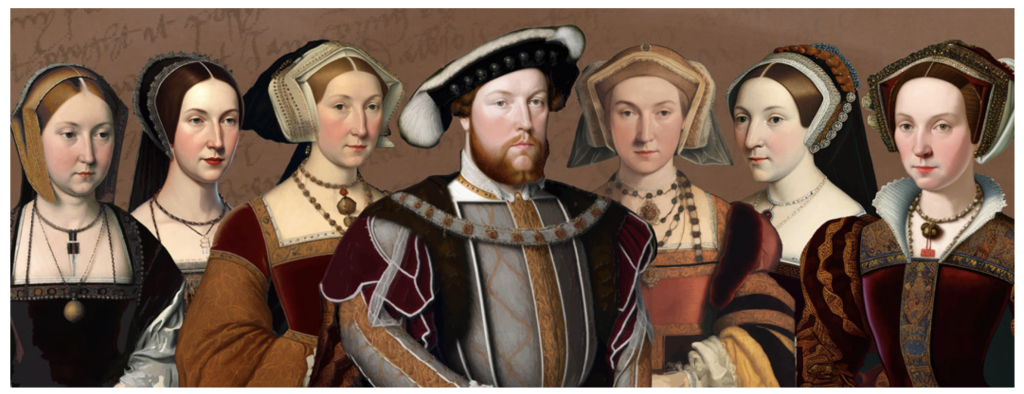
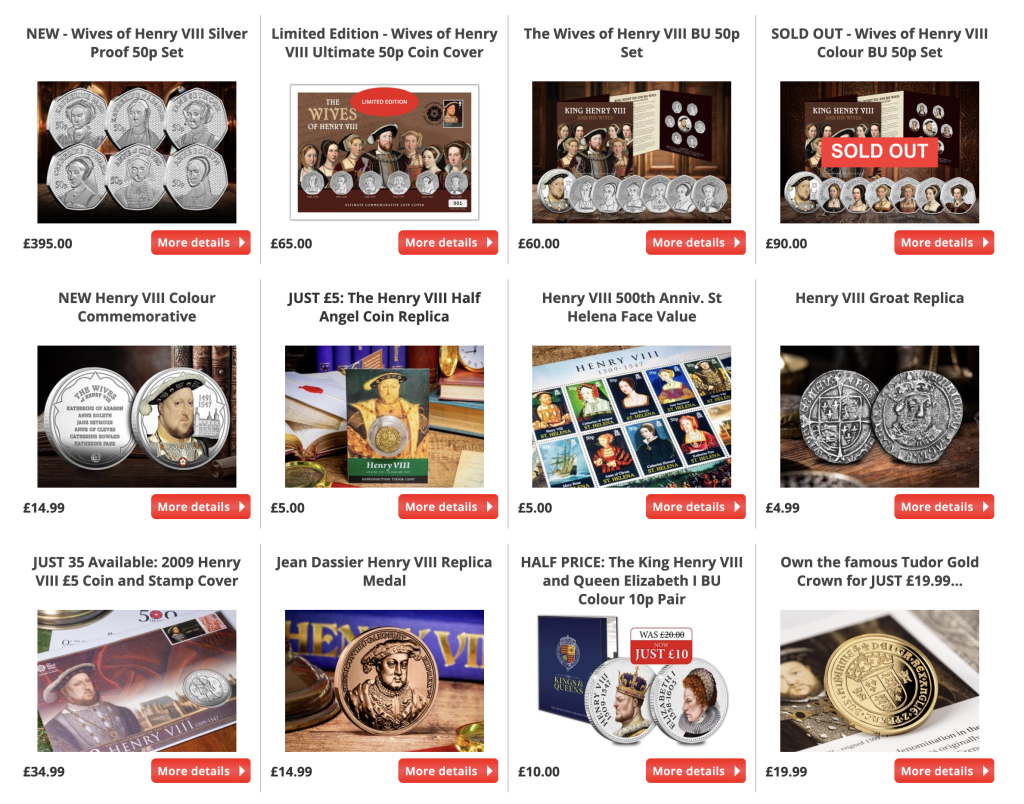
Explore the Ice Age Giants 50p series
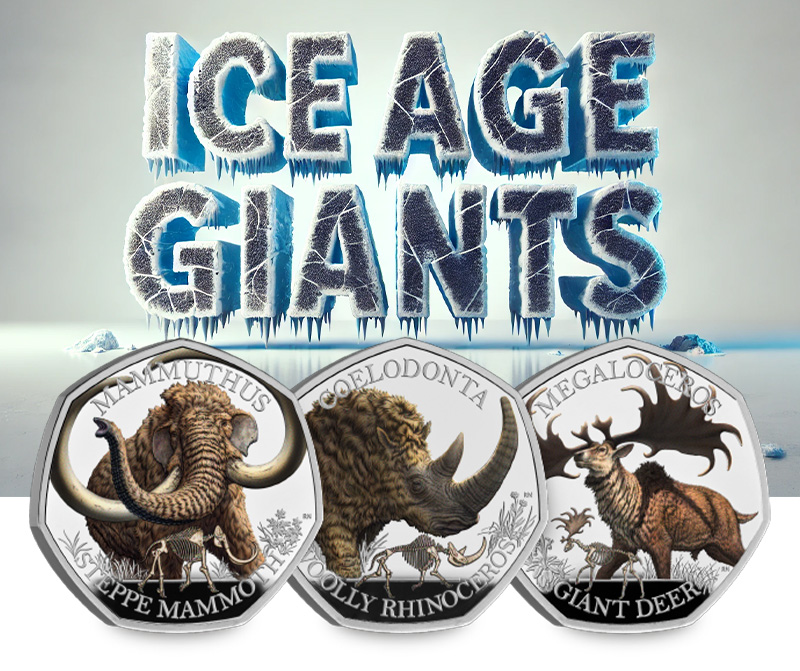
The Royal Mint’s Tales of the Earth collection continues to captivate with a new series of coins that celebrate the awe-inspiring megafauna of the Ice Age. These coins depict three of the most iconic large mammals of the Pleistocene Epoch, a period that began 2.6 million years ago when vast ice sheets covered large parts of the Earth. While these glaciers dominated the landscape, immense creatures known as megafauna thrived in the grasslands nearby, and the latest UK 50p coins honour these giants in stunning detail.
The Mighty Steppe Mammoth
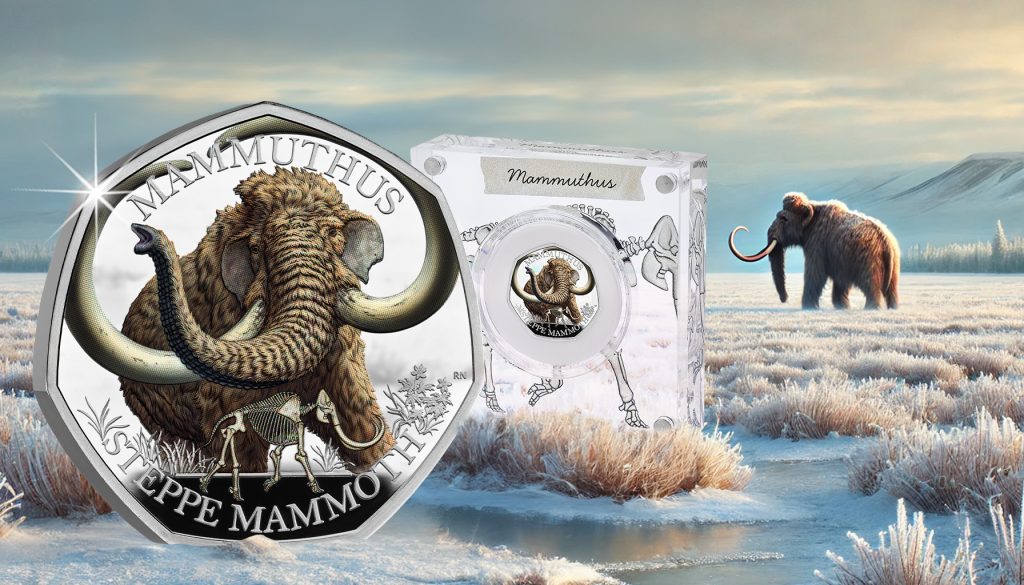
The first coin in the series features Mammuthus trogontherii, the colossal Steppe Mammoth. One of the largest mammals to exist during the Pleistocene Epoch, the steppe mammoth stood an impressive 4 meters tall at the shoulder and weighed up to 10 tonnes. Thought to have evolved from an ancestor in China around 2 million years ago, this giant herbivore adapted to changing environments with notable features. Its molars developed more ridges to better withstand abrasive vegetation, a critical adaptation that distinguished it from other mammoth species.
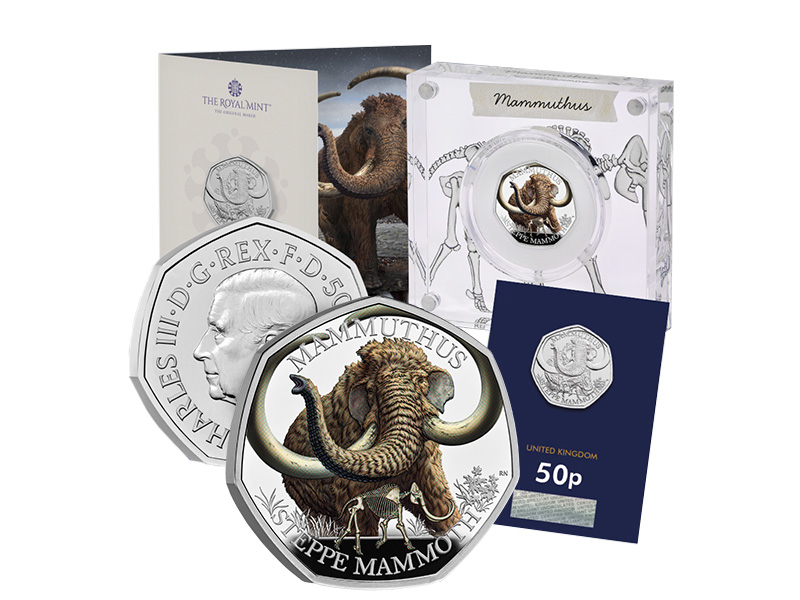

The Hardy Woolly Rhinoceros
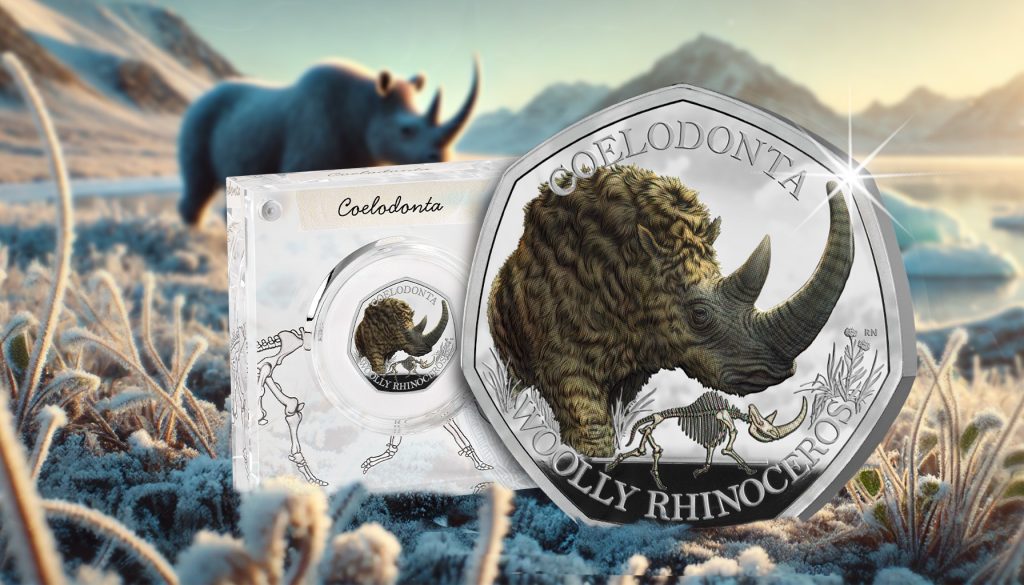
Next in the series is the Woolly Rhinoceros UK 50p Coin, which highlights this remarkable creature that once roamed the grassy plains of the Ice Age. Despite being similar in size to today’s African white rhinoceros—around 2 tonnes—the woolly rhinoceros was well-suited for freezing conditions. Its thick double-layered coat protected it from temperatures as low as -60°C, and its long, sabre-like front horn likely helped clear snow in search of vegetation.
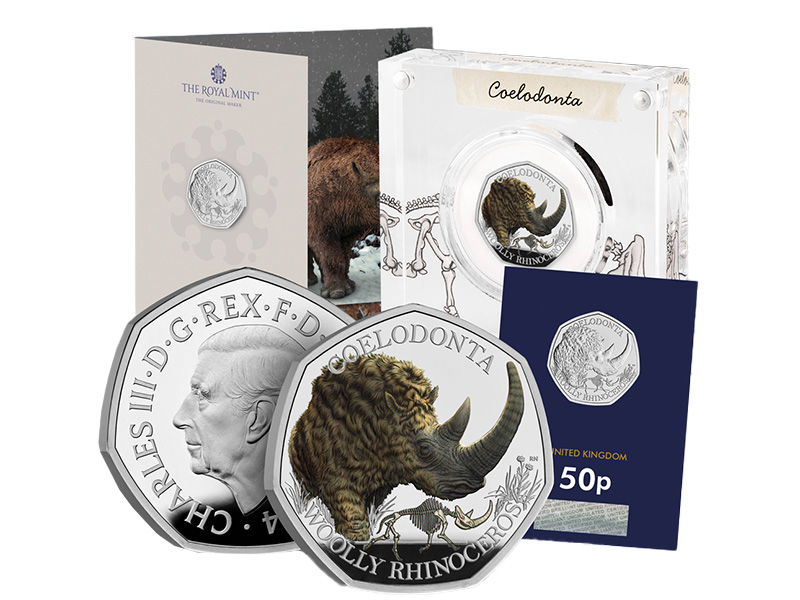

The Majestic Giant Deer

The final coin in this breathtaking series honours the Giant Deer, or Megaloceros giganteus. Known for its colossal antlers, which were the largest of any known species (measuring between 2.5 and 3.5 meters across), the giant deer was truly a sight to behold. With a shoulder height just under 2 meters—about the height of an average doorframe—this megafauna species managed to thrive in both the colder and warmer climates of the Ice Age, often coexisting with the woolly mammoth in more southerly areas.


This Icy 50p coin range from the Royal Mint’s Tales of the Earth series beautifully commemorates the grandeur of the Ice Age and it’s extraordinary creatures. From the towering Steppe Mammoth to the resilient Woolly Rhinoceros and the majestic Giant Deer, each coin is a tribute to a bygone era of natural wonders. Crafted with expert attention to detail and scientific accuracy, these coins are a must-have.
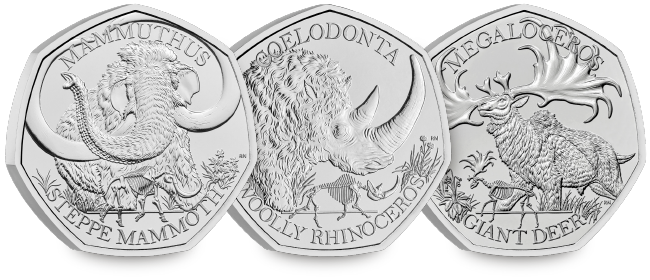
A Historic First: The Silver Edition of The Sovereign
For the first time in history, The Sovereign has been struck from pure silver, marking a ground-breaking evolution for this iconic coin. Renowned for centuries as the “chief coin of the world,” The Sovereign’s legacy of impeccable design and quality now takes a dazzling new form. This silver Proof edition isn’t just an historic chapter in numismatic history—it’s a fresh way for collectors to own and celebrate a true British classic. With its radiant silver finish, this reimagined Sovereign is a must-have for any collection, blending tradition with a breath-taking modern twist.

The Important Details
Crafted with the same precision and care as its traditional gold counterpart, this silver Sovereign matches the original in both diameter and weight. Struck to The Royal Mint’s exacting Proof standard, you can truly appreciate the intricacy of the design. It offers a fresh and distinctive way to experience the timeless beauty of The Sovereign.

The reverse of this remarkable piece features Benedetto Pistrucci’s iconic St George and the Dragon design, a classic image that has graced The Sovereign for over 200 years. Pistrucci’s dynamic portrayal of England’s legendary hero has become a defining symbol of this coin, and it’s no less captivating in this silver edition.
A Modern Royal Legacy
On the obverse, the silver Sovereign features the official coinage portrait of His Majesty King Charles III, created by Martin Jennings. This distinguished profile captures the dignity of the new King and marks a new chapter in the coin’s storied history. For collectors, it’s a significant and meaningful way to commemorate this historic period for the British monarchy.

Key Features That Make This Coin Unmissable:
- A Historic First: This is the first time The Royal Mint has released The Sovereign in fine silver.
- Collectible Appeal: A once-in-a-lifetime opportunity to add a brand-new Sovereign variation to your collection.
- Classic Design: Benedetto Pistrucci’s St George and the Dragon takes pride of place on the reverse.
- Regal Portrait: The obverse features the official portrait of King Charles III, uniting past and present in one collectible masterpiece.
Why Collectors Shouldn’t Miss Out
This silver edition of The Sovereign represents more than just a new specification, it symbolises innovation and tradition coming together. For collectors, it’s a piece of numismatic history, celebrating one of Britain’s most famous coins in a fresh and exciting form. Whether you’re a dedicated collector or a newcomer to the world of coin collecting, this silver Proof Sovereign is bound to become a cherished highlight of your collection.
>> Click here to secure THE FIRST EVER UK SILVER SOVEREIGN for your collection <<


